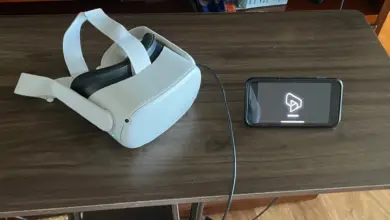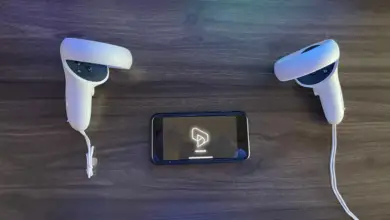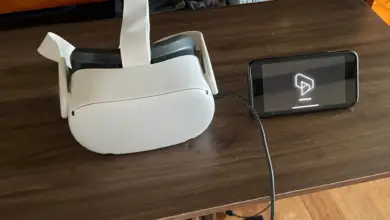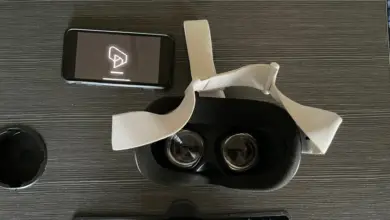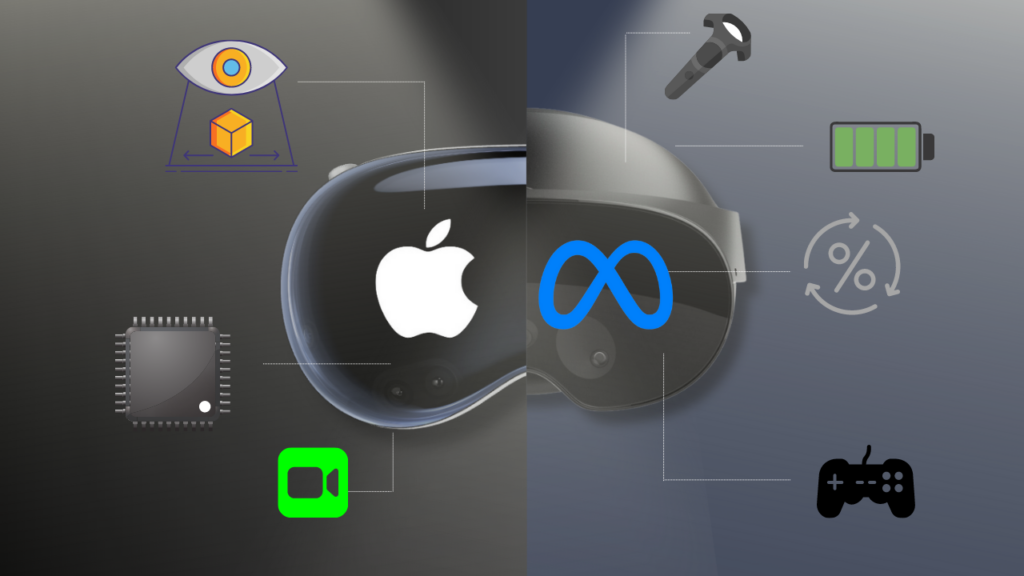
As Apple enters the VR arena with its Vision Pro, it’s time to see how it stacks up against Meta’s established Quest Pro. Both are impressive pieces of tech, each with its own strengths. Apple brings its trademark design elegance and a host of innovative features, while Meta brings its experience and a vast ecosystem of games and apps. This isn’t just about specs and price tags. It’s about understanding which device will truly enhance your virtual experiences and fit seamlessly into your life. We’ll delve deep into the realities of these virtual worlds, providing honest insights to guide you in making the best choice. Without further ado, let’s get started.
Performance
Let’s start with performance. We have the Meta Quest Pro, boasting an upgraded XR2+ processor, a leap from the previous model’s XR2 chip. This extra boost in performance does indeed assist, especially given the range of games and applications available. However, it must be noted that this is still a chip grounded on mobile processor technology. And while the Quest Pro can be wirelessly linked to a Windows PC for demanding games and applications, benefiting from a discrete GPU, the image quality and responsiveness are only as good as the device it’s tethered to.
On the other side, we have Apple’s Vision Pro, equipped with an M2 processor. This is the very same chip utilized in Mac computers, MacBooks, and the high-performing iPad Pro. Even if Apple does limit the chip’s power to control heat, it stands to reason that the Vision Pro will be significantly faster than Meta’s offering.
Sure, a high-performance PC with a top-tier GPU might outdo the Vision Pro in terms of benchmarks, but the graphical fidelity provided by Apple’s headset will still be noticeably superior to that of Meta’s Quest Pro. And with the added advantage of being able to connect to a Mac, the comparison becomes somewhat irrelevant.
It seems that this round goes to Apple. However, considering the stark difference in price points, this victory comes as no surprise.
Resolution
Delving into the realm of display resolution, Apple’s Vision Pro stands in a league of its own. It’s no understatement to say that it’s the sharpest consumer VR headset available to date. Early reviews have praised the extraordinary clarity of its lenses. With a pixel count exceeding double of that offered by the Quest Pro, the Vision Pro undoubtedly serves a crisper, more refined image.
Meanwhile, Meta’s Quest Pro sports mini-LED backlighting technology, renowned for its ability to produce truer blacks and a more extensive dynamic brightness range. While Apple also employs mini-LED in its 12.9-inch iPad Pro and selected MacBook Pro models, in the field of VR display, there’s a superior option: OLED.
Enter the Vision Pro, armed with micro-OLED displays. This technology allows for precise control at the pixel level, resulting in pure black colors. The Vision Pro’s High Dynamic Range or HDR performance is set to eclipse Meta’s solution, particularly in high-contrast scenarios laden with fine details.
When we pit Apple against Meta, and indeed against all other VR headset manufacturers, on the battlefield of display quality, Apple takes the lead by a substantial margin. If display quality were the only factor under consideration, it would be crystal clear: The Vision Pro emerges as the unequivocal victor.
Refresh Rate
While Apple was initially quiet about the Vision Pro’s refresh rate, our investigation revealed a typical 90 frames per second refresh rate, bridging the gap between standard iPhones’ 60Hz and ProMotion’s 120Hz. This 90Hz rate, often seen as the minimum for virtual reality, is adequate for our brains to perceive the motion as real.
Interestingly, the Vision Pro can operate beyond 90Hz in certain scenarios, such as watching a 24 frames per second movie, when it adjusts to 96Hz to reduce frame jitter. This adaptability echoes ProMotion displays on iPhones and iPads.
Although 90Hz might seem lower than some VR headsets that reach up to 144Hz, no other headset pushes as many pixels as the Vision Pro, giving it an edge in overall immersion.
Turning to the Quest Pro, it also boasts a 90Hz refresh rate, providing clear visuals and smooth gameplay in our tests.
When we compare the two, both headsets have a 90Hz refresh rate, but the Vision Pro packs in more pixels. However, the Quest Pro still holds its own with smooth visuals and gameplay. The Vision Pro has an advantage with its adaptable refresh rate and resolution, but these may not make a huge difference for everyone.
Field of View
Apple has largely remained silent about the field of view in its new device. However, in a recent video by Adam Savage’s Tested, the topic was discussed in some detail.
For those familiar with the Valve Index, it is known to offer an impressively wide field of view. According to Adam Savage’s Tested, the Field of view of Apple’s new device is not as expansive in comparison. While Apple hasn’t made an official statement regarding this, our educated guess would be that it’s closer to the 100-degree mark.
In comparison, the Meta Quest Pro is equipped with five infrared eye and face tracking sensors, each capable of capturing a 120-degree field of view. These sensors are arranged in an optimal array to accurately track upper and lower facial movements. This design is intended to offer a higher level of expressiveness and precision compared to other solutions that use fewer sensors.
With such a configuration, the Meta Quest Pro seemingly outperforms Apple’s new device in terms of field-of-view capabilities.
Dimensions and Weight
As of now, the specific dimensions and weight of the Vision Pro have not been released, so it’s difficult to make direct physical comparisons with other devices. In contrast, the Quest Pro’s specifications are available, and it is known to weigh 722 grams. This makes the Quest Pro substantially heavier – about 44% more – compared to the base-level Quest 2 model.
Controls
As for the controls, the Vision Pro doesn’t come with controllers; instead, it introduces interaction through hand gestures, eye control, and even voice commands, offering a hands-free experience. However, it lacks the haptic feedback that many users appreciate in VR environments for added immersion and realism.
Now, in comparison, the Meta Quest Pro also supports hand gestures, which is great. However, Meta has a slightly different take on interaction in VR. They believe that controllers are a more natural extension of your hands when you’re immersed in a virtual world.
While they both have their pros and cons, many users highlight the lack of haptic feedback on the Apple Vision Pro, which can be a significant drawback for some. Haptic feedback is that sense of touch or vibration you feel in response to certain actions or interactions in the virtual environment. This can greatly enhance the immersion and realism of a VR experience.
Apple has addressed the haptic feedback issue in its own way with the Vision Pro. The device includes a built-in depth sensor, a feature designed to enhance the detection of spatial distances. This aims to create a more intuitive understanding of the virtual environment, even without the physical touch response typically associated with haptic feedback.
Additionally, Apple provides an innovative solution for typing in the VR space. Their virtual keyboard has a unique feature that helps compensate for the lack of haptics. As you navigate your fingers over the virtual keys, each key will highlight as your finger approaches. The closer you get to the key, the brighter the highlight becomes. This visual cue can assist users in more accurately selecting keys, making the typing experience smoother and more intuitive even without the tactile sensation typically provided by haptic feedback.
Apps
When it comes to apps, Apple holds a significant advantage thanks to the quality of its offerings. A brief look at their interface reveals familiar icons – Photos, Camera, Notes. Importantly, they’ve integrated the full suite of Microsoft’s apps. From FaceTime to iMessages, all quintessential Apple apps are incorporated into this headset. These apps are also designed to work seamlessly with your iPhone, iPad, or Apple Watch. Considering these factors, it’s clear that Apple has the upper hand in this aspect.
Gaming
Moving on to the realm of gaming, the MetaQuest Pro clearly takes the lead. Boasting an extensive library of both Virtual Reality and Augmented Reality games, the MetaQuest Pro’s pedigree shines through. Considering the years they’ve spent developing since the era of the original Oculus Rift and Oculus headsets, it’s no surprise. A multitude of these games could potentially be ported over in the future.
Now, Apple is certainly not resting on its laurels. They’ve announced plans to release a hundred arcade games from launch. However, it’s worth noting that Apple’s venture into the VR gaming space doesn’t seem to prioritize gaming. The recent opening to Unity for development does indicate that we could expect a plethora of games to emerge.
Despite these efforts, it’s evident that the MetaQuest Pro leads the pack, particularly with high-profile collaborative games like Star Wars, Walking Dead, and Jurassic Park. When it comes to the gaming experience, the MetaQuest Pro undoubtedly takes the crown.
Comfort
In the realm of comfort, Meta’s Quest Pro and Apple’s Vision Pro both bring significant considerations to the table.
Meta emphasized improved comfort with the Quest Pro, most notably with a more open facial interface. This design lets users glance down and see the real world beneath the headset edge. However, there have been issues with the comfort of the head pad, with some users finding it uncomfortable over extended periods.
On the flip side, Apple’s Vision Pro seems to focus heavily on comfort, evident in its breathable facial interface and flexible fit based on a study of various head shapes. The Vision Pro’s durability seems promising, but only time will reveal its true potential.
With Meta’s known comfort and manageable fixes and Apple’s promising focus on comfort, it seems fair to deem this category a tie. Despite the potential for more out-of-the-box comfort with the Vision Pro, it lacks Meta’s open facial interface.
Mixed Reality
When it comes to mixed reality, the Vision Pro comes equipped with a digital crown, a feature reminiscent of the Apple Watch. This crown serves a specific purpose: it allows users to switch between immersive virtual reality and a less immersive mixed reality mode, where you can still see your real-life surroundings.
Meta, on the other hand, has a feature called ‘Passthrough.’ This essentially lets you step out of your virtual viewpoint and see a real-time view of your physical surroundings.
While both features aim to bridge the gap between the virtual and real worlds, reviews suggest that Apple’s approach might be more user-friendly. According to the Wall Street Journal’s reviewer, the Vision Pro stands out from other headsets because of the ease with which you can toggle between the real world and the digital world.
Working In The MetaVerse
Here’s where things get interesting. Both Apple and Meta want you to believe that working in a virtual space is the future. Giant virtual screens and multitasking anywhere sound great, right?
But there’s a key difference. With Quest Pro, you’re not locked into an ecosystem. You can use it with PCs and Android devices. The Apple Vision Pro, as you might have guessed, plays best with Apple products.
Battery Life
Apple claims that the Vision Pro is built for extended use, stating that it is designed for all-day use when plugged in, and up to two hours of use with its external, high-performance battery.
Reflecting on our hands-on experience with the Quest Pro, we observed that the battery life reliably sustains a full two hours of uninterrupted use. Therefore, both devices showcase comparable battery life performances on average.
The design choices regarding battery placement in the Vision Pro and Meta Quest Pro have sparked some conversations. In the case of the Vision Pro, the battery is wired and dangles from the side of the headset. For some, this design choice is seen as a bit clunky, and it seems to contrast with the otherwise sleek aesthetics of the headset.
In contrast, the Meta Quest Pro features a battery pack that is positioned at the back of the user’s head. This design decision does add a bit of weight to the headset, but it results in a more streamlined look and offers a tangle-free experience, which some users may prefer.
Price
Price is often the deciding factor for many when it comes to making a purchase. The Apple Vision Pro comes with a hefty price tag, and if it’s outside your budget, the Meta Quest Pro is a solid alternative, especially considering its recent price reduction.
Let’s talk numbers: the Vision Pro is priced at around $3,500. Now, that’s quite an investment, but it’s important to note that it packs some seriously advanced hardware. For those who value cutting-edge technology, the cost might be justified by the components alone. On the other side, the Meta Quest Pro is priced at around $1,000, which is significantly lower. Meta has made aggressive pricing decisions, and many consider it to be an excellent value for what it offers.
When you’re faced with the question of whether the Vision Pro is worth the extra $2,500 compared to the Quest Pro, it becomes a more nuanced decision.
One aspect to weigh in is the intended use of the headset. Apple positions the Vision Pro as a spatial computer, emphasizing its non-gaming applications. As of now, there’s no mention of gaming or fitness apps, which might be something you want to consider if those are your primary interests.
So, before making a decision, think about what you’re looking for in a VR headset, and how you plan to use it. The Vision Pro and Meta Quest Pro cater to different needs and preferences, and understanding these distinctions will be key in making the choice that’s right for you.
Which One Should You Go For?
Now, let’s address the critical question: which one is the right fit for you?
For those of you who prioritize media consumption, the superior display quality of Apple’s Vision Pro might make it an attractive choice. With its higher-resolution virtual monitors and faster performance, it also promises improved productivity. Even though Apple Arcade provides 2D gaming, the company didn’t highlight VR games during its presentation.
The Vision Pro also seems to have a superior mixed-reality mode, and an intriguing feature called EyeSight. This allows you to maintain eye contact with others, even while wearing the headset, providing a unique reverse passthrough.
On the other hand, if you desire a blend of VR gaming, workouts, web browsing, and occasional PC connectivity for work, the Meta Quest Pro might just be your ideal match. And all of this comes at a significantly lower price point.
It’s worth noting that the Quest Pro even lets you open windows for applications like Microsoft Word, Excel, and the web-based image editor, Pixlr.
If a personal cinema experience is crucial to you, and you’re deeply ingrained in the Apple ecosystem, with sufficient funds for the Vision Pro, it could be your best bet. The Vision Pro, with its top-notch mixed reality features and cutting-edge technology, surpasses all its competitors.
However, be prepared for a rather slim selection of apps initially, even with iPad app compatibility. The device isn’t set to launch until early 2024, and by that time, we might witness big game announcements and robust apps designed to leverage the headset’s potential.
As we learn more about the Apple Vision Pro, we might uncover more use cases that could justify its hefty price tag.


